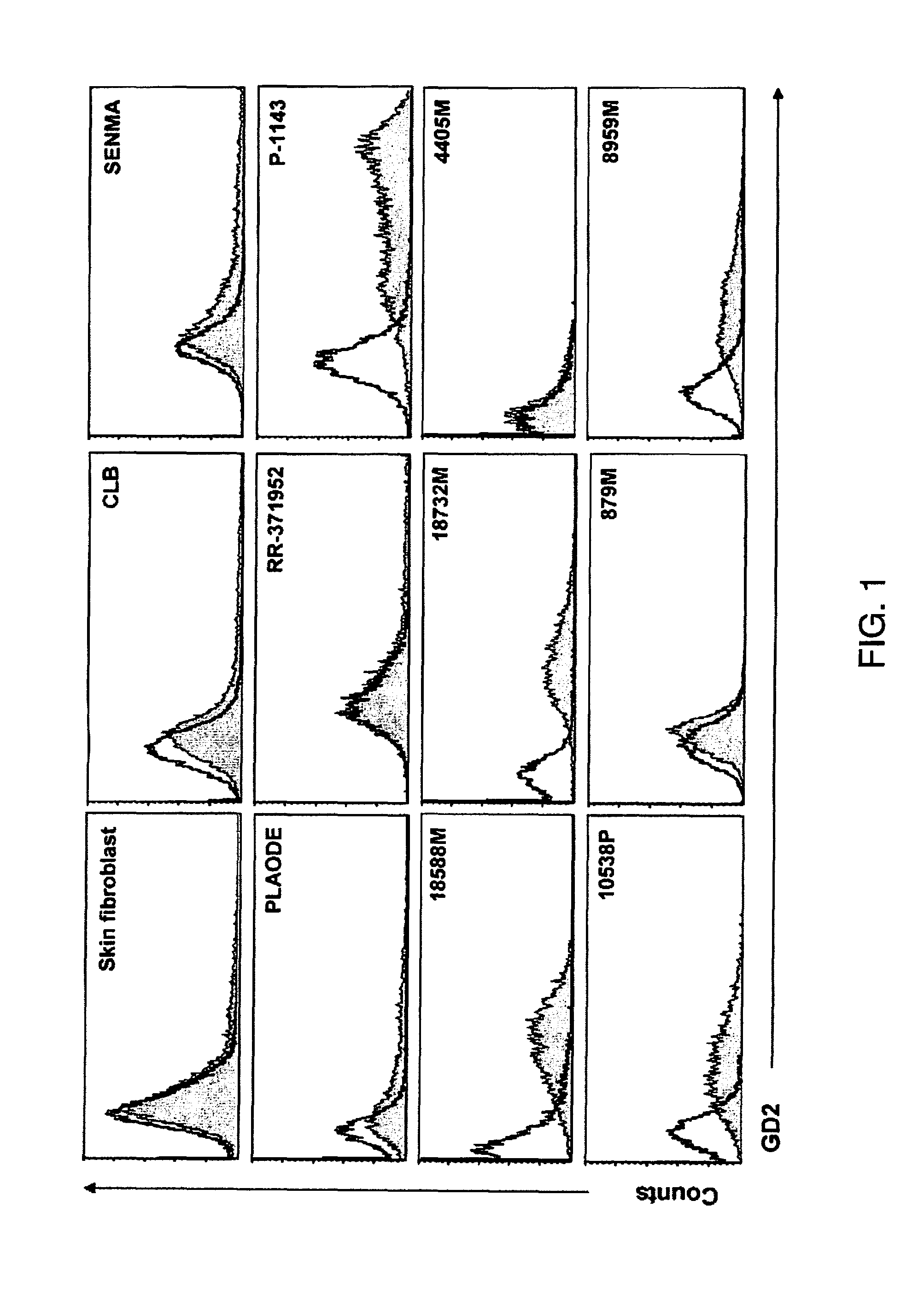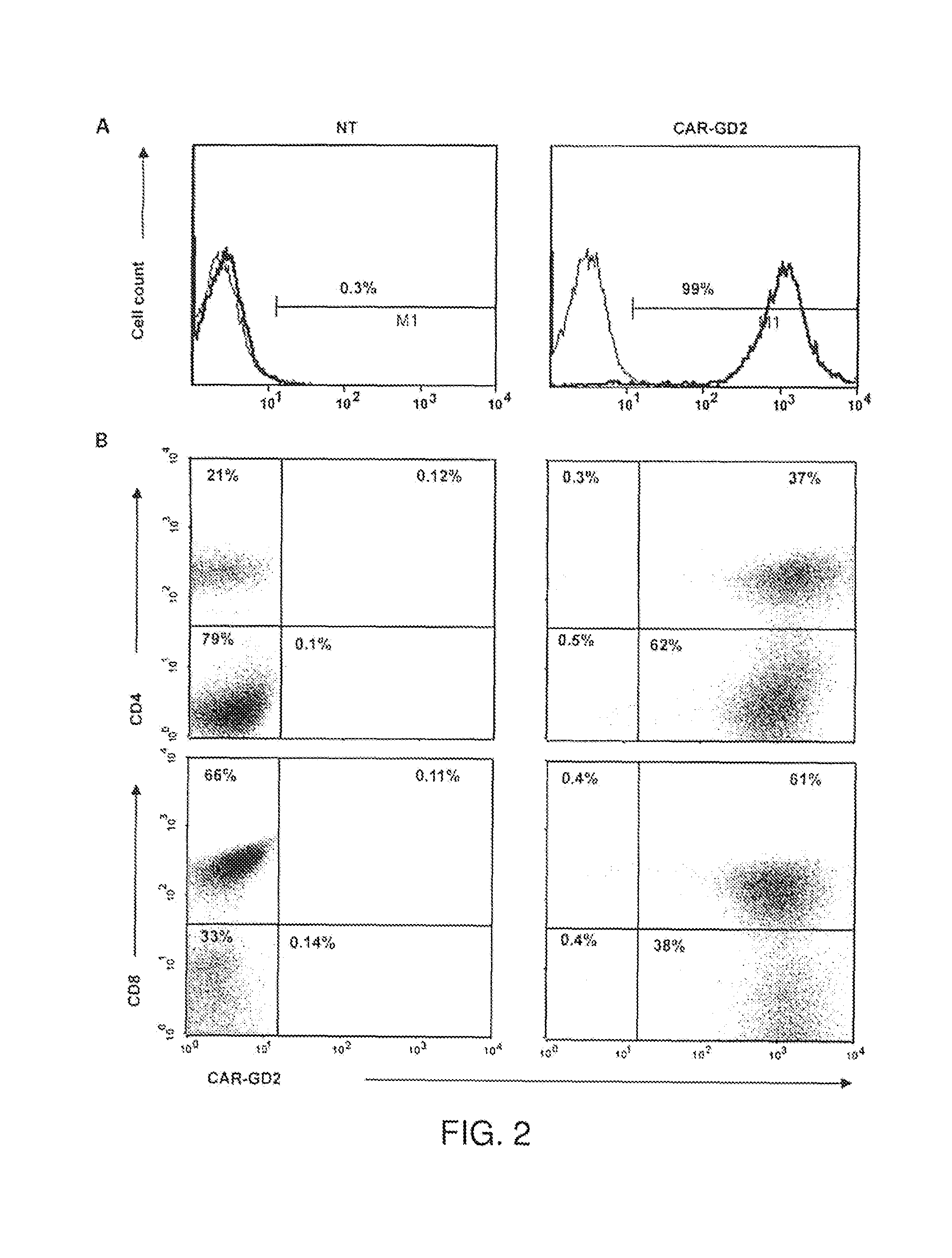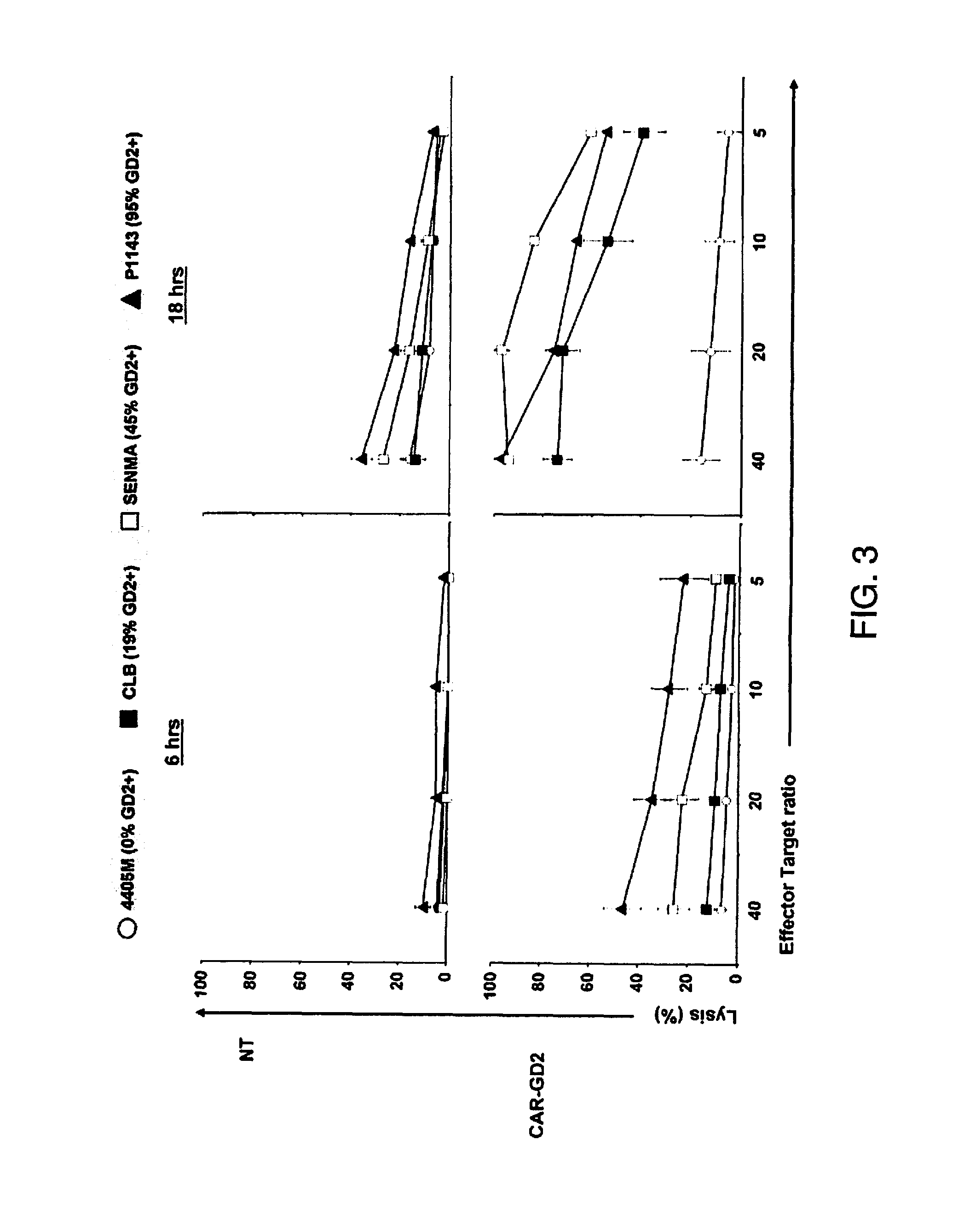Immunotherapy of cancer using genetically engineered gd2-specific t cells
- Summary
- Abstract
- Description
- Claims
- Application Information
AI Technical Summary
Benefits of technology
Problems solved by technology
Method used
Image
Examples
example 1
Exemplary Materials and Methods
[0065]Establishment of cell lines. After informed consent, tumor biopsies (from metastatic skin lesions) were obtained from five patients with stage III or IV melanoma. The tumor tissue was minced and the fragments resuspended in 30 mL of digestion medium containing DNAse at 30 U / mL, hyaluronidase at 0.1 mg / mL, and collagenase at 1 mg / mL (all from Sigma-Aldrich), in complete medium prepared as follows: DMEM (Cambrex) supplemented with 10% of heat inactivated FCS (HyClone), 200 IU / mL penicillin, 200 mg / mL streptomycin, 100 mg / mL gentamicin (Invitrogen), and 2 mmol / L GlutaMAX (Invitrogen). After 4 h incubation at 37° C. in 5% CO2, the cell suspension supernatant (free of tissue debris) was collected, transferred to a new tube, and then centrifuged at 400×g for 5 min. Cells were resuspended in a 6-well plate in fresh complete medium containing 1 mmol / L sodium pyruvate (Invitrogen), and cultured at 37° C. in 5% CO2. Culture medium was renewed every 72 h. A...
example 2
Expression of GD2 by Primary Melanoma Cells
[0077]To characterize GD2 as a target for CAR-directed T cell therapy, primary melanoma cells were dissociated from five patients after biopsy of cutaneous metastatic melanoma and an additional six established cell lines were used in a study. Cells from the five patients and four of the established lines expressed GD2 on immunofluorescence staining, and between 17% and 95% of the cells were positive, with variable intensity of expression (FIG. 1). Expression of GD2 was used on a normal skin fibroblast cell line and it was confirmed that it did not express the ganglioside. To confirm the absence of normeoplastic cells in the primary culture, expression of MCSP on the cells (Table 1) was examined, and to compare the frequency of expression of GD2 with that of other known melanoma tumor associated antigens, the expression of gp100, MART1, and MAGE-1 was also measured. The percentage range of GD2-positive cells was comparable with the range of ...
example 3
Significance of Certain Embodiments of the Invention
[0087]In particular aspects of the invention, the ganglioside antigen GD2 is expressed on the majority of primary melanoma cell lines, and T cells engineered to express a CAR directed to this antigen are able to recognize and lyse GD2-positive melanoma target cells in vitro and in a SCID mouse model in vivo. The transgenic receptor construct included the signaling endodomains of the CD28 and OX40 costimulatory molecules, and redirected T cells showed activation, proliferation, and cytokine release after T-cell receptor engagement by GD2.
[0088]Melanoma has long been a target of cellular immunotherapies directed to the tumor-associated antigens expressed by the malignant cells. Although earlier clinical research focused on reinfusion of expanded tumor infiltrating lymphocytes, efforts have recently been directed against the cancer testis series of antigens such as MAGE and the melanocyte differentiation proteins such as MART-1, by ge...
PUM
| Property | Measurement | Unit |
|---|---|---|
| Cytotoxicity | aaaaa | aaaaa |
Abstract
Description
Claims
Application Information
 Login to View More
Login to View More - R&D
- Intellectual Property
- Life Sciences
- Materials
- Tech Scout
- Unparalleled Data Quality
- Higher Quality Content
- 60% Fewer Hallucinations
Browse by: Latest US Patents, China's latest patents, Technical Efficacy Thesaurus, Application Domain, Technology Topic, Popular Technical Reports.
© 2025 PatSnap. All rights reserved.Legal|Privacy policy|Modern Slavery Act Transparency Statement|Sitemap|About US| Contact US: help@patsnap.com



